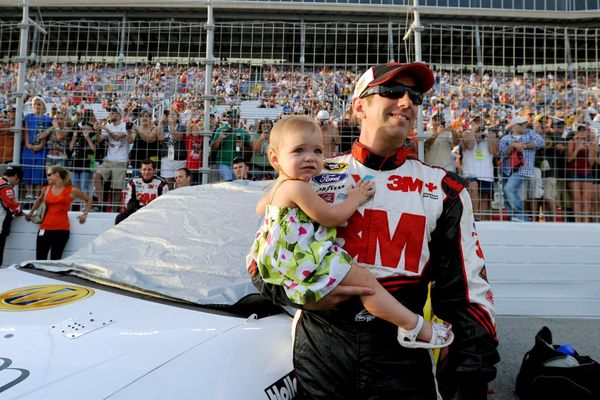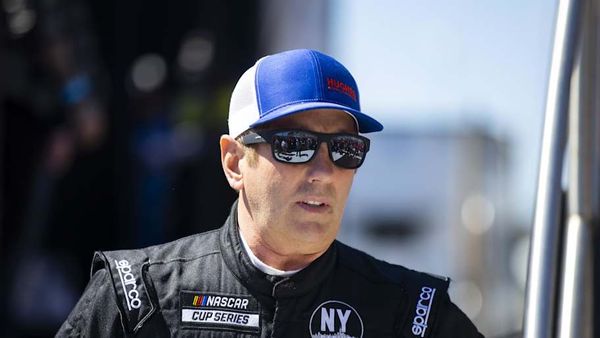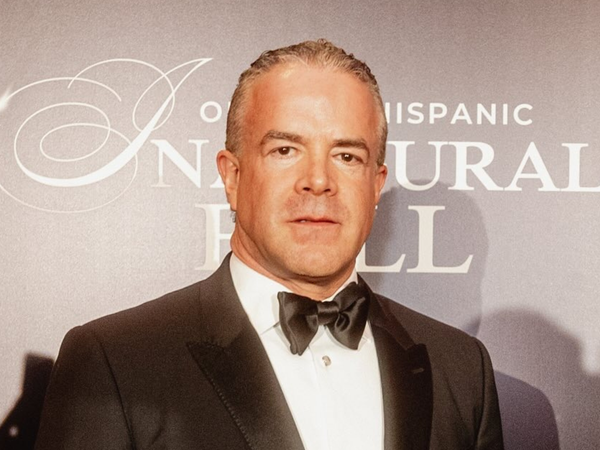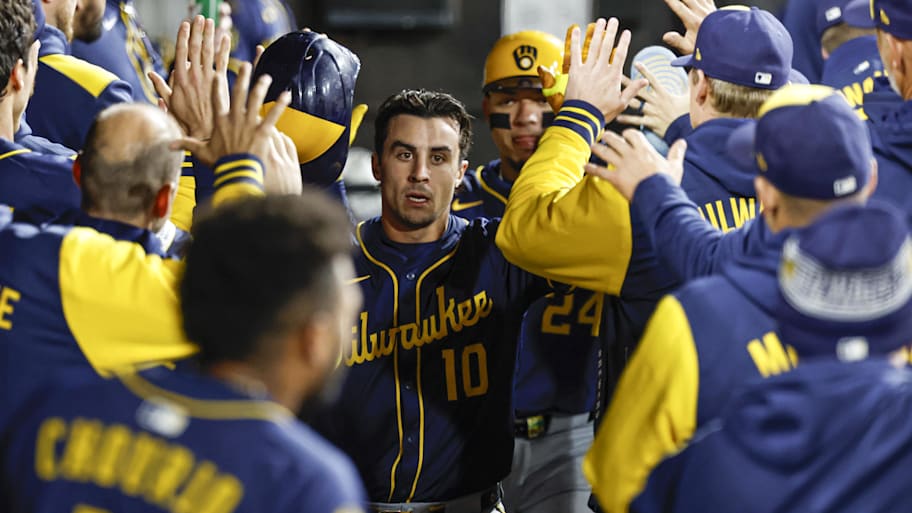
Sal Frelick of the Milwaukee Brewers is the kind of player the Launch Angle Revolution squeezed out of the game. He is a full-time right fielder on pace to hit eight home runs and slug less than .400. In the five full seasons from 2018–23, there were no Frelicks—no qualified right fielders with such low slugging numbers. Teams chased a thirst for power— for more Joey Gallos—while excusing the swing-and-miss.
Then the rules changed. Shifts were outlawed. Stolen bases were made easier. Range and athleticism mattered. And as pitchers complement increased velocity with a science-based emphasis on the three S’s—shaping, sequencing and spinning—hitters who can put the bat on the ball are gaining new importance.
Now look at the game. The Frelicks are coming back to baseball. The Brewers are the hottest team in baseball. They are winners of seven in a row. They have Frelick, Brice Turang, Caleb Durbin, Joey Ortiz, Isaac Collins and William Contreras, who all slug below .400 but have at least five stolen bases. No other team has more than four such players. The Brewers put the bat on the ball, play rangy, superb defense and run the bases better than any other team. This is not just a Brewers ideology.
“No, I see it around baseball,” Milwaukee manager Pat Murphy says. “I mean, the pitching is so good. It is. It’s hard to have slug because we’ve got so much information about how to stay away from slug.
“And here's the thing: Hitting is a defensive move. It’s a reaction. So, it’s the guys that can handle the bat a little bit. The guys that can contact control the ball flight a little like Sal.
“Sal’s big attribute is he’s a tremendous defender. An incredible defender. Now, this guy can throw, but it doesn’t come out at 99 [mph]. You see Sal throw, it’s 92, but it's on a line and it’s in the glove and there’s a recorded out. He's got a knack. He's got that [Dustin] Pedroia knack. Great teammate. Intelligent kid.
“Of course, I don’t tell him any of these things, but he’s really, truly a winning player.”
Frelick is part of a growing population of high-average, low-slug players, most of whom are undersized, that have a place in the game again. Luis Arraez, Steven Kwan, TJ Friedl, Nico Hoerner, Jake Myers, Xavier Edwards, Nolan Schanuel, Hyeseong Kim, Gavin Lux … they can play their slash-and-run game without the pressure of chasing launch angle, boosting pull-side air percentage or adding muscle. The Tigers rave about how the bat control of Gleyber Torres has boosted their lineup. The Phillies do the same when it comes to Bryson Stott grinding out long at bats.
One of the many timeless beauties of baseball is it is the most democratic game every invented. Players take turns in order. Size matters little. Anybody can play.
Think of a traditional “winning” player like 5'10” Orlando Cabrera. He was a career .272 hitter with a .390 slug. He also was a brilliant student of the game who lasted 15 years in the majors, during which he collected more than 2,000 hits, never struck out more than 71 times in a season and played shortstop for six playoff teams, including the 2004 World Series champion Boston Red Sox.
In the spirit of players like Cabrera, I wondered what the data said about high-average, low-slug players gaining a foothold in the post-shift generation. I searched for qualified hitters who hit better than .270 but slugged less than .420. Here’s what I found:
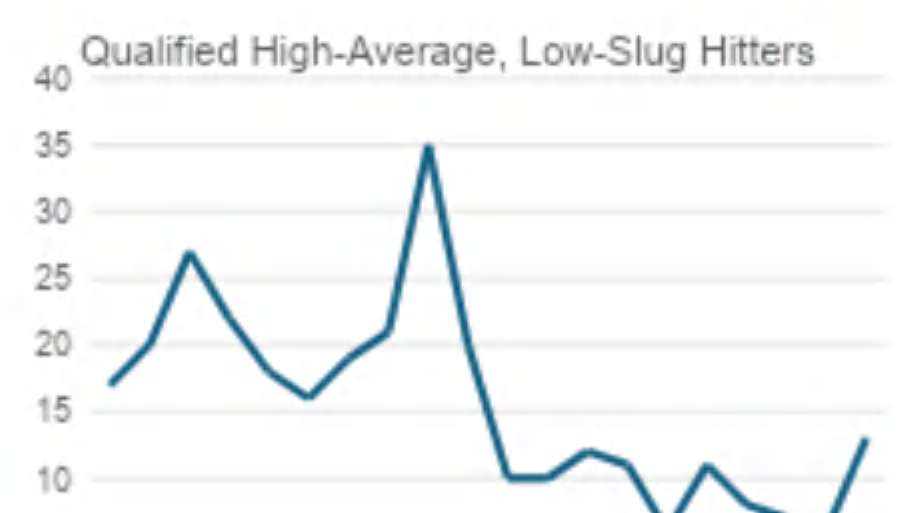
The high-average, low-slug hitter began disappearing quickly in 2015, the start of the Launch Angle Revolution, when the birth of StatCast and other data-driven technologies put a focus on getting the ball in the air. Last year, there were only six high-average, low-slug hitters, the fewest in a full season ever. This year the population has bounced back to 13, the most since 2015.
It’s not a full-blown trend yet, but the bounceback is encouraging as far as a return to a more balanced, more aesthetic brand of baseball. There is something going on here, and it shows up in the strikeout rate.
Major league teams used more pitchers to cover the first two months of this season than they did the entire season 20 years ago. This growing army of pitchers is throwing harder and with more spin and pitch types than ever. And yet there have been enough countermoves on the offensive side to drop the strikeout rate for a second straight year—the first time that has happened in 22 years. The strikeout percentage of 22% is the lowest since 2017.
Frelick strikes out only 11.8% of the time. He also walks at a below-average rate (7.7%). He doesn’t hit the ball hard (85.8 mph). But he does put it in play, and when he does, he bats .331.
“It fits on our team,” Murphy says. “And Durbin's kind of that type. Great defender. You’ve got to defend, you’ve got to make great contact and not punch [out], get the guy in from third no matter what … you know, that kind of stuff.
“You’ve got to have that 20% or lower punch [rate] and you’ve got to take your walks. You’ve got to be able to steal a base, run and defend.”
I loved how Christian Yelich defined how the Brewers play offensive baseball: It’s all about traffic. Because traffic tends to annoy.
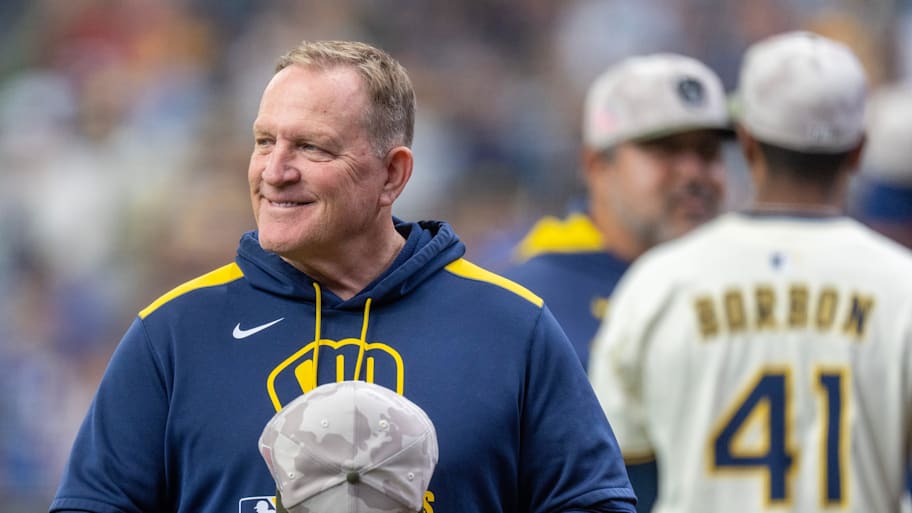
“It’s a big part of our game and you have to prepare daily for pitchers, signs and tips that you can pick up,” Murphy says about the team’s baserunning. “You’ve got to communicate with each other and let them know, ‘Hey, I’m thinking about running.’ You have to communicate with the hitter. The base coaches are heavily involved.”
StatCast rates Milwaukee as the best baserunning team in baseball. And none of the other 29 teams are anywhere close to the Brewers.
“We’re so far from perfect,” Murphy says. “For someone to say that we’re like really good at it or not, you know what I mean? It’s like we have the potential to be great at it, and hopefully it grows into that. But our meetings every day, the hitting meeting and offensive meetings every day, we are showing video of basically, ‘What the [hell] are you guys doing?’
“But the threat of the steal? Just talk to the pitchers. The threat of the steal opens up doors. Because pitchers are just in a hurry into the plate. They’re not executing quite as good.
“Same with the threat of the bunt. You look at our number of bunt hits, I don’t know how many it is. I don’t really care. But we try it a lot, meaning we’re pretty good at it. We try it a lot. It changes the positioning and the pitcher. What’s the pitcher saying when the guy squares for the bunt? ‘I’m just going to throw it in there.’ And oftentimes it leads to an extra-base hit.
“So, we've been okay at it. But that’s the type of player that I think works right now for us. And then they grow into more. Sal’s growing into being a hitter. Durbin’s having success just because he’s contributing every night doing things like this. He’s a terrific base runner, and he’s got the hit-by-pitch down.”
Let’s not kid ourselves about “small ball,” which is a poor term for fundamental baseball. Home runs still win championships. The past five World Series winners finished no lower than fourth in MLB in home runs. The Brewers rank 23rd in home runs. No pennant winner has finished that low in home runs since the 2015 Royals.
But baseball may be re-balancing itself when it comes to different ways to win a game and especially those who play it. Amateur players who don’t have size or impressive exit velocity but who can run and put the bat on the ball can watch a major league game and gain confirmation that their game does play at the highest level. The lesson particularly resounds when they watch Frelick and the Brewers play baseball.
This article was originally published on www.si.com as High-Average, Low-Slugging Hitters Are Back, and Baseball Is Better for It.


